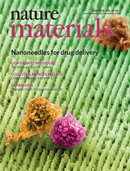May 2007 - Research increasingly shows promise to both slow and relieve the effects diabetic retinopathy, the most common complication of diabetes.
In its earliest stages, retinopathy often has no overt symptoms but can progress over time to a phase in which the blood vessels of the eye leak and rupture easily, eventually causing blindness. This frightening complication is caused by high blood glucose levels, and nearly all people with type 1 diabetes show some symptoms of the disorder.
An in-depth article in the spring 2007 edition of Countdown, the quarterly journal of the Juvenile Diabetes Research Foundation, details ongoing human clinical trials in this area, and important findings that have been made to date. In the article, JDRF-funded scientists share valuable insights into the causes of retinopathy, as well as the therapeutics that are being developed as a result of the identification of new biological targets.
One study mentioned within the article was led by Dr. Lloyd Aiello of the Joslin Diabetes Center, who showed that the compound ruboxistaurin slowed the progress of retinopathy by inhibiting an enzyme in the body called protein kinase C beta (PKC beta), which is believed to contribute to the blood vessel damage that leads to the disease. This is the first time a drug has been shown to protect against the complication in a human clinical trial.
According to Dr. Richard Insel, Executive Vice President of Research for JDRF, "Since retinopathy is the most common and serious eye-related complication of those with type 1 and type 2 diabetes – and is the leading cause of adult blindness in Americans – the outstanding research being done in this area will have a significant impact on the millions of people with diabetes."
Continue Reading Below ↓↓↓
Source: Juvenile Diabetes Research Foundation International










